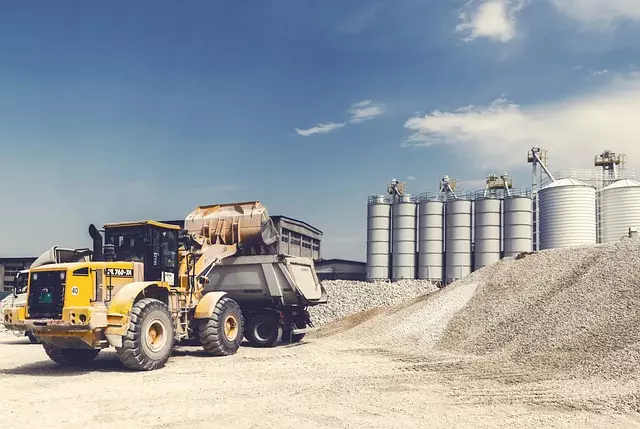Foundry operations demand robust industrial hygiene due to multiple hazards from molten metal pouring to sand molding. Hazard recognition and assessment identifies risks like toxic fumes, noise, and extreme temperatures, guiding exposure monitoring. Regular monitoring, combining theoretical knowledge and practical observation, ensures compliance with safety standards and drives targeted interventions to protect workers from immediate and long-term health issues. Advanced technologies enhance these processes, fostering a safer environment through proactive measures and worker empowerment.
Foundries, while integral to various industries, present unique challenges due to their complex operations. This article delves into the critical aspect of foundry safety, exploring potential hazards and strategies to mitigate risks. From understanding foundational processes to implementing advanced exposure monitoring techniques, we uncover essential practices for industrial hygiene. Through systematic hazard recognition and assessment, foundries can ensure worker well-being, fostering a safer environment. Each section guides readers through essential steps, from identifying risks to employing effective safety measures.
- Understanding Foundry Operations: A Glimpse into Potential Hazards
- Industrial Hygiene in Foundry Settings: Protecting Workers' Health
- Hazard Recognition and Assessment: Unveiling Risks Step by Step
- Exposure Monitoring Techniques for Safe Foundry Environments
- Mitigating Risks: Strategies to Enhance Foundry Worker Safety
Understanding Foundry Operations: A Glimpse into Potential Hazards
Understanding Foundry Operations involves recognizing that it’s a complex process with numerous potential hazards. From molten metal pouring to sand molding, each step presents unique risks. Workers can face exposure to toxic substances like silicon, iron oxide, and other metals, which may lead to respiratory issues and skin irritations. Additionally, high temperatures and intense heat radiation pose significant dangers, requiring stringent safety measures.
Hazard recognition and assessment are crucial in identifying these risks. Regular exposure monitoring is essential for tracking worker safety. Industrial hygiene practices play a pivotal role in mitigating these hazards by implementing control measures, ensuring proper ventilation, using protective equipment, and establishing strict protocols to minimize employee exposure to these dangerous elements.
Industrial Hygiene in Foundry Settings: Protecting Workers' Health
In foundry operations, maintaining a safe and healthy work environment is paramount. Industrial hygiene plays a pivotal role in ensuring workers’ well-being by addressing potential hazards unique to this industry. Foundry settings often involve intense heat, heavy machinery, and hazardous materials, necessitating robust industrial hygiene practices. By implementing effective hazard recognition and assessment strategies, foundries can identify and mitigate risks associated with noise exposure, chemical fumes, airborne particles, and extreme temperatures.
Regular exposure monitoring is crucial in gauging workers’ risk levels and determining the necessity of personal protective equipment (PPE) or engineering controls. This proactive approach to industrial hygiene not only protects employees from short-term health issues but also prevents long-term occupational diseases. Effective monitoring involves periodic sampling and analysis of air quality, noise levels, and other relevant factors to ensure compliance with safety standards and regulatory guidelines.
Hazard Recognition and Assessment: Unveiling Risks Step by Step
Hazard Recognition and Assessment is a meticulous process that serves as the cornerstone for ensuring safe foundry operations. It involves a systematic exploration to identify potential risks lurking within industrial environments, focusing on the specific hazards associated with metal casting processes. This step-by-step approach begins with a comprehensive review of established knowledge about hazardous substances and conditions prevalent in foundries, such as hot metal, molten metals, toxic fumes, and noise.
The process then delves into direct observation and interaction within the foundry to uncover invisible risks. This includes evaluating exposure monitoring data related to air quality, noise levels, and employee health over time. By combining theoretical understanding with practical insights, foundries can accurately assess the severity and likelihood of each identified hazard. Such an assessment guides the implementation of appropriate control measures, enhancing industrial hygiene and ensuring a safer working environment for all personnel involved.
Exposure Monitoring Techniques for Safe Foundry Environments
In ensuring safe foundry environments, exposure monitoring techniques play a pivotal role in industrial hygiene. These methods are instrumental in identifying and mitigating hazards recognized through thorough assessment processes. By employing advanced technologies and standards, foundries can accurately measure and evaluate employee exposure to hazardous materials such as metals, fumes, and dust. Regular monitoring not only helps comply with occupational health regulations but also fosters proactive workplace safety measures.
Effective exposure monitoring involves a multi-faceted approach. It starts with identifying specific hazards present in the foundry operations. This is followed by selecting appropriate monitoring devices tailored to measure the concentration of hazardous substances in the air. Techniques such as personal sampling, area monitoring, and real-time continuous monitoring provide valuable data for risk assessment. The information gathered enables foundries to implement targeted interventions like improving ventilation systems, adopting better work practices, and providing personal protective equipment, ultimately enhancing worker health and safety.
Mitigating Risks: Strategies to Enhance Foundry Worker Safety
Foundry operations present unique challenges that demand proactive safety measures to protect workers from potential hazards. Mitigating risks through a comprehensive approach is essential, encompassing strategies such as enhancing industrial hygiene and implementing rigorous hazard recognition and assessment protocols. By identifying and evaluating risks associated with various processes, foundries can prioritize control measures. Regular exposure monitoring plays a pivotal role in this process, providing data-driven insights to guide safety interventions.
Employers should foster an environment where workers are empowered to recognize potential dangers and participate in safety discussions. Training programs focused on hazard assessment and control techniques can equip employees with the knowledge to take proactive steps. Additionally, leveraging advanced technologies for monitoring and controlling exposure levels ensures a safer work environment, aligning with best practices in industrial hygiene.


